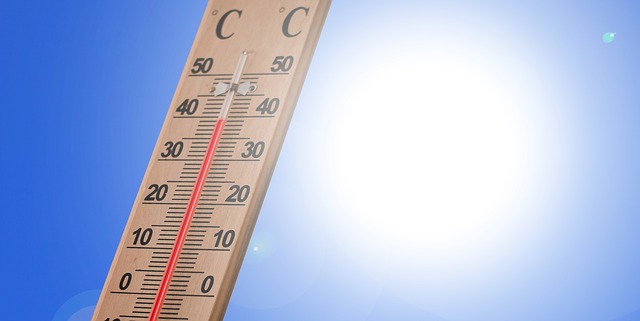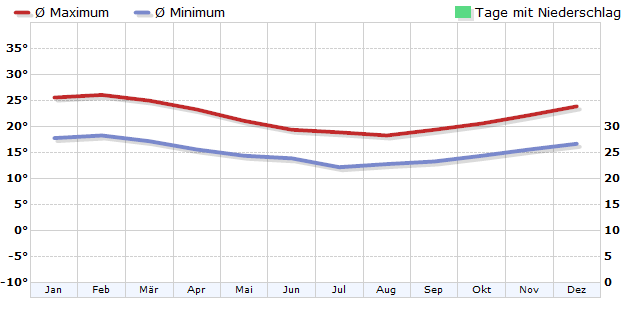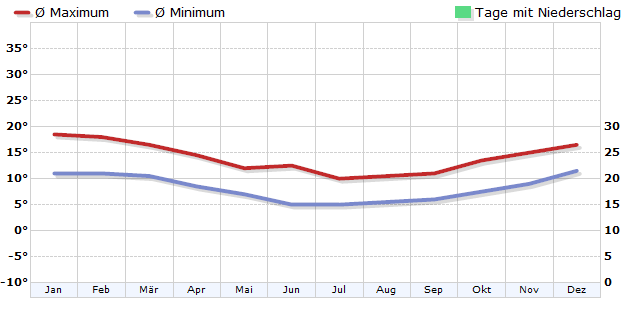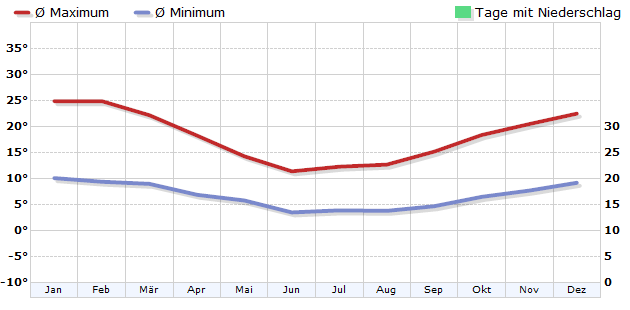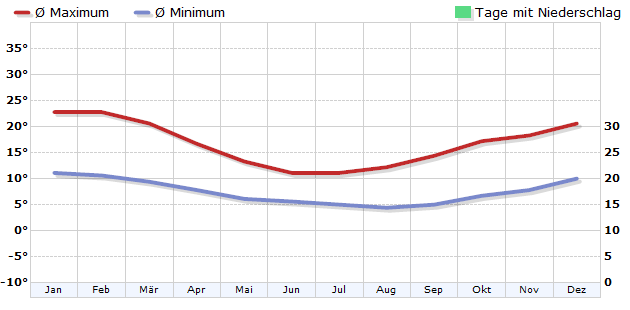Climate Chile
Chile extends between the 17th and 56th degree of southern latitude, and is only about 180 kilometres wide. In addition, there are enormous differences in altitude and the cold Humboldt Current from the Antarctic, which results in many different climate zones. The Atacama Desert in the north of the country is considered to be the driest region on earth. The average annual precipitation is only one millimetre. Often no rain falls for years. The temperature varies greatly between day and night. In summer the maximum temperatures are around 25 degrees, in winter around 15 degrees. At night temperatures often drop below 0 degrees. In southern direction the Atamaca changes into a semi-desert. Central Chile is characterized by a Mediterranean climate. A course of the year with temperature and precipitation is clearly recognizable. In the summer (December to March) the average temperatures lie between 18 and 22 degrees, and the maximum values can rise to over 30 degrees. In winter, the average temperature is usually around or below 10 degrees and the maximum is not more than 16 degrees. Snow can also fall inland. In the south of Chile the ocean climate is humid and temperate. The average summer temperatures usually remain below 16 degrees. In winter the temperatures remain in the single digits. In the west there is heavy rainfall. Tierra del Fuego in the extreme south of Chile is characterized by a humid and cool climate. Rainfall is evenly distributed throughout the year. In summer the highest temperatures are between 12 and 14 degrees. Extreme weather changes occur all year round. In the heights of the Andes there is an alpine climate. With the exception of the dry north, snow frequently falls in winter. On Easter Island, which belongs to Chile, about 3500 kilometres west of the mainland, the climate is subtropical. Even in winter, temperatures rarely fall below 15 degrees Celsius and during the summer months they are usually between 25 and 30 degrees Celsius. The annual precipitation sum amounts to approximately 1200 mm.
For trips to northern or central Chile, the months of October to April are recommended. The further south you go, the shorter the recommended travel time will be. Tierra del Fuego should only be visited between December and February due to the weather. Due to the low water temperatures in Chile, a bathing holiday is not recommended. From June to September you can do winter sports in the Andes.
